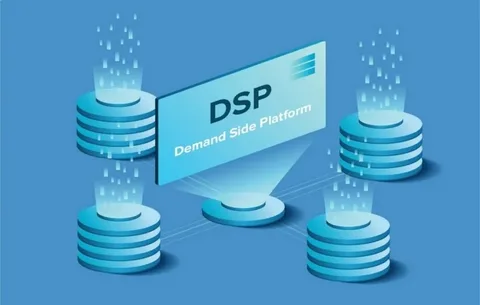What Is a Demand Side Platform? A Guide for Marketers

In digital marketing, where every impression and click is measurable, the tools that streamline ad buying are essential. One such tool, the Demand Side Platform (DSP), has transformed the advertising landscape by automating and optimizing media purchases. This guide explores what a DSP is, how it functions, and why it’s a crucial asset for marketers.
What Is a Demand Side Platform?
A Demand Side Platform (DSP) is a software system that allows advertisers to buy ad inventory across multiple publisher sites automatically. Unlike traditional ad buying, which involves manual negotiations, DSPs facilitate real-time bidding (RTB), enabling advertisers to bid on individual ad impressions in milliseconds.
When a user visits a website, the DSP assesses whether they fit the advertiser’s target criteria—such as demographics, behavior, or location. If they do, the DSP bids on the ad space, ensuring that advertisers only pay for impressions that are most likely to convert.
How Real-Time Bidding Works
DSPs operate in a real-time auction system, ensuring that ads are placed efficiently and cost-effectively. The process unfolds in milliseconds:
- User Data Collection: When a webpage or app loads, data such as location, device type, and browsing history is gathered.
- Bid Request: This data is sent to multiple demand-side platforms via an ad exchange.
- Automated Bidding: DSPs analyze the bid request and determine if the user matches the advertiser’s target audience. If they do, the DSP submits a bid.
- Auction Execution: The ad exchange selects the highest bid, and the winning ad is immediately displayed to the user.
- Ad Delivery: The ad is loaded on the webpage, all within milliseconds.
This automated, data-driven approach ensures that ads reach the right audience at the right time, maximizing engagement and conversions.
Key Benefits for Marketers
Using a DSP offers multiple advantages that improve campaign effectiveness:
- Precision Targeting: DSPs leverage first-party and third-party data to refine audience targeting based on demographics, behavior, and even contextual factors like weather or time of day.
- Cost Efficiency: Real-time bidding allows advertisers to bid strategically, ensuring they only pay for high-value impressions.
- Scalability: A DSP connects advertisers to thousands of websites, apps, and streaming services, eliminating the need for individual negotiations.
- Real-Time Analytics: Marketers receive immediate performance insights, allowing them to optimize campaigns dynamically.
- Brand Safety: DSPs provide controls to ensure ads do not appear on harmful or inappropriate websites, protecting brand reputation.
Challenges and Considerations
Despite their advantages, DSPs come with challenges that marketers must navigate:
- Data Privacy Compliance: Laws like GDPR and CCPA regulate how user data is collected and used. Advertisers must ensure compliance to avoid legal risks.
- Ad Fraud Risks: Bots and fake traffic can inflate impressions, wasting ad spend. Choosing a DSP with robust fraud prevention tools is critical.
- Technical Complexity: Managing a DSP requires knowledge of bidding strategies, analytics, and audience segmentation—skills that some marketers may need to develop.
How to Choose the Right DSP
Selecting the right DSP is crucial for campaign success. Marketers should look for platforms that:
- Integrate with Data Management Platforms (DMPs): To access richer audience insights.
- Offer Wide Ad Inventory Access: Covering display, mobile, video, and connected TV ads.
- Provide Transparent Reporting: Detailed analytics help measure performance and optimize spending.
- Include Brand Safety and Fraud Prevention Features: Ensuring ads appear in appropriate environments.
Innovations Shaping the Future of DSPs
As technology advances, DSPs continue to evolve:
- AI and Machine Learning: These enhance bid optimization by predicting user behavior and adjusting campaigns in real time.
- Programmatic Direct: A hybrid approach combining automated ad buying with guaranteed placements, giving advertisers more control over premium inventory.
- Cross-Device Tracking: Improved user tracking across smartphones, tablets, and desktops ensures seamless ad experiences.
The Future of DSPs in Marketing
As digital advertising becomes more sophisticated, DSPs will continue to integrate AI, prioritize data privacy, and offer more transparent ad buying solutions. Marketers who stay ahead of these trends will maximize their ad spend and drive more meaningful consumer engagement.
By effectively leveraging a Demand Side Platform, marketers can automate, optimize, and scale their advertising efforts, ensuring higher ROI and stronger audience connections in an increasingly digital-first world.




